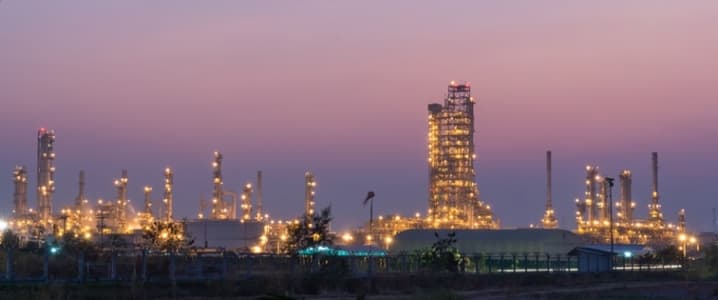A senior Kuwait Petroleum Corp official has confirmed to media the company’s plans to increase production by 44 percent to almost 4 million barrels a day in 2020. The plan is a continuation of current attempts to pump as much crude as possible and tender new E&P projects in the Persian Gulf. In addition, Kuwait Petroleum Corp plans to ramp up local refining capacities.
Kuwaiti crude is currently trading at around $40 a barrel, a palpable discount to international benchmark Brent. However, Kuwait boasts low-cost production, but according to a local energy analyst, $40 is below the breakeven level, and significantly so. Kamal Al-Harami has slammed the government for failing to come up with a contingency plan in case prices stay at current levels, and for doing nothing to prop them up—not that there’s a lot Kuwait could do on its own, even though it is among the top 10 global oil producers. Related: 90% Off Sale On Offshore Drilling Rigs?
Yet the criticism may not be completely deserved. April saw oil workers in Kuwait go on strike for three days, cutting production to as low as 1.1 million barrels per day, down from 3 million, in protest to planned reforms that would see higher prices for utilities and food, and a possible salary freeze for the public sector. These price increases, Al-Harami notes, will only affect expats, so they are more of a half measure. Yet, freezing the salaries of public servants would lead to substantial savings.
According to OPEC data, Kuwait exports most of its oil: an average of 2 million barrels per day in 2015. This April, a quarter of this went to China, a 30 percent increase on the year. Kuwait is also eyeing energy supply projects in South Korea. At home, Kuwait Petroleum Corp. is preparing for its first offshore projects. The message seems clear: we won’t surrender market share, whatever the price. Related: Increasing Outages Continue To Stabilize Oil Prices
This message is in tune with the strategy used by OPEC’s biggest producer, Saudi Arabia, yet it was easier for Saudi Arabia to enforce new, higher prices for common goods. Kuwait has faced serious opposition because of the greater degree of human rights and freedoms, including the effective existence of trade unions. Freedoms or no freedoms, when push comes to shove and the budget deficit swells beyond manageable levels, Kuwait will have to take steps to rein in expenses. Or so one would think.
In April, when the news about the coming tenders for offshore projects came out, Kuwait Petroleum Corp.’s chief executive Jamal Jaafar said he expected the oil market to return to normal in the second half of 2016. This, however, will be a new normal, as a number of analysts have warned—a new normal of about $50 a barrel for the short term, based on the last-day price of Brent futures for December 2016 in CME Group’s system. It’s as good a forecast as any other, as nobody really knows what could happen to oil even in the next two months. Related: Petrobras Offloads $1.4B In Assets Amidst Political Turmoil
According to Al-Harami, the breakeven price for Kuwaiti crude is in the $60-$70 range. Even if the analyst is, consciously or not, painting the picture grimmer than it is, the current price level is not doing Kuwait any favors. What’s more, there is no certainty whatsoever that Brent will reach $47 by the end of the year and stay there, especially as supply grows.
What’s perhaps worse is that the longer Kuwait waits for prices to improve, meanwhile raising production, the harder it will be to effect meaningful reforms and the fewer resources it will have to do this.
By Irina Slav for Oilprice.com
More Top Reads From Oilprice.com:
- Wave Of Violence Causes Nigerian Oil Output To Fall To 20 Year Lows
- How Suncor Has Become The King Of Canadian Oil Sands
- Can Saudi Arabia Really Break Its Dependence On Oil?


















Mature production around the world declines 3-4M barrels/day each year. Off-shore has been a very consistent contributor to helping replace those declines every year with millions of barrels/day every year. That contribution is going to be missing for multiple years in the future.